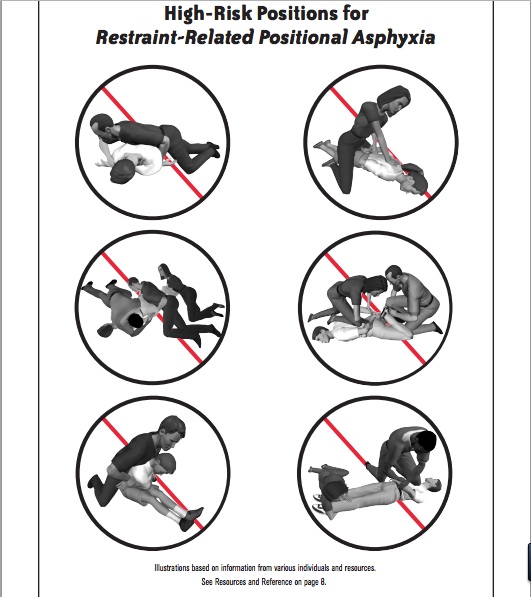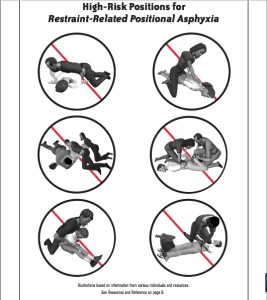Restraining someone with Autism is a touchy subject. Often, when I bring it up to emergency responders they immediately get defensive and feel I am purporting a shiny, happy world full of kittens and rainbows where no one gets hurt… and an Autistic person acting violently will 100% of the time respond favorably to a polite request to calm down.
I’m not a drama llama blogger that thinks I’m qualified enough to tell all of you that put your life on the line how to do your job. Nope. I’m a responder, too. And a parent of two Autistic teens that perceive and respond to the world very differently. My offerings are simply more tools for your toolbox. Never to REPLACE the job you have to do, but to help you, particularly with scene size up. To give you the knowledge to say, “Wait – there might be something else going on here.” You may or may not have the opportunity to respond differently, but if you have a deeper understanding of the behaviors you encounter and additional tools to fall back on, it helps everyone go home safely at the end of the day.
What You Should Know About Restraining
Ideally, it should be a last resort. CrisisPrevention.com states that, “other than to receive medical or nursing care, individuals should be restrained only when all of the following guidelines are met:
- The person is an immediate danger to self or others
- Other ways to manage the person’s dangerous behavior have failed”
Restraints must NEVER be used as punishment or to inflict pain. A physical restraint should be used as a temporary emergency measure to take control of another person only until that person has regained control of her own behavior and is no longer a danger to herself or others.
If giving a person a chance to self-calm or having a trusted family member or friend intervene is NOT an option, is there a way to simply seclude the person? If their meltdown behavior is a direct result of an overwhelming sensory environment (e.g., lights and sirens, crowds) calming can sometimes occur quickly when you remove sensory triggers.
If you do successfully move someone to a quieter area and they begin to calm down, it’s important to assign someone to be with them at all times. They may be a bolt risk or, if agitated again, could start self-injurious behaviors.
If you have exhausted your options or the person is injuring or could injure themselves or others, restraining may be necessary for the safety of all parties involved. From a physiological standpoint, here’s what you need to know:
Typically an Autistic person’s trunk (torso) is poorly developed, which affects balance, coordination, and especially their airway. Using standard restraint methods on someone with Autism may result in positional asphyxiation.
If you must restrain:
- Especially dangerous positions include facedown (prone), a seated or kneeling position in which the person being restrained is bent over at the waist, or any facedown position on a bed or mat
- Check their condition frequently – look for choking, vomiting, discomfort
- Put them in a quiet, safe place away from others
- They may have a difficult time supporting their airway
- Turn the person on their side to ensure normal breathing
- They may be prone to seizures
- Be prepared for resistance – they may not understand why they shouldn’t struggle
It’s important to note that restrained individuals have gone from a state of no distress to death in a matter of moments. Avoiding high-risk positions that interfere with breathing is of course best; however, even in a standard position, an Autistic person is still at risk for positional asphyxiation. Be alert!



